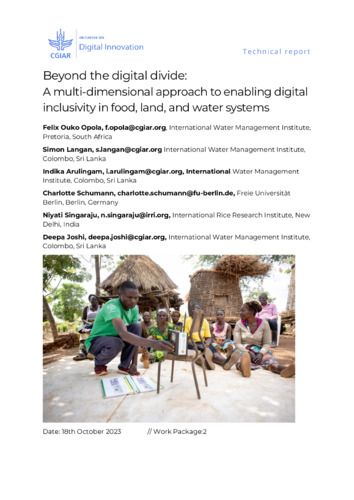Beyond the digital divide: a multi-dimensional approach to enabling digital inclusivity in food, land, and water systems
Abstract
In what is proclaimed as the ‘fourth industrial revolution’, digital innovation is thought to have the potential to provide solutions to key challenges facing food production and consumption together with the support of sustainability of the underpinning support of land, and water systems. Nowhere is this more the case in less-industrialised countries, which largely have agrarian based economies. Applications of digital innovations include faster and more reliable communication, better collection, analysis, and storage of data, enhancing democratic processes and transparency in governance, affordable financial services and can provide the basis for decision support. However, there is a risk that people with less formal education and skills and little resource endowments as well as particular groups of people such as women will be excluded from participating or benefiting from digital innovation, the so-called digital divide. In addition, there is a risk that people, communities, and societies may be disadvantaged or harmed by digital innovation processes. Digital inclusivity within food, land and water systems are approaches in digital innovation need to include the differing needs and resources of men, women, youth, indigenous communities who produce most the world’s food in smallholder land holdings. Here we provide the state-of-the-art evidence from peer reviewed literature and other literature in support of these statements. On the basis of this and our wider anecdotal experience we present, a holistic multi-dimensional framework for digital inclusivity. The aim of the digital inclusivity index (and supporting tools) is to provide a resource to guide to transform and change development and application of digital innovations. Specifically, it provides governments, funders, researchers, and development agencies a framework on how to assess, minimise and lessen exclusion from digital innovation. This is achieved through increasing awareness of the characteristics of digital exclusion, recognising the needs of the actors that they target with digital interventions which are more inclusive, making interventions more participatory and mitigating any potential harm that can be caused by digital innovation. We also argue that the approach to digital innovation needs to be set within the context of a wide ranging ‘digital ecosystem’ where different actors contribute knowledge and resources, and digital innovation goes beyond the adoption and use of technologies to include changes in preexisting social arrangement and institutions.

